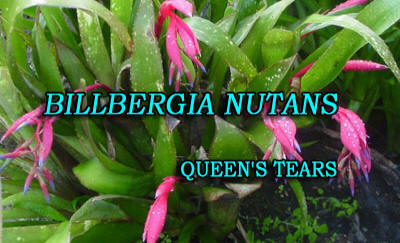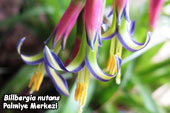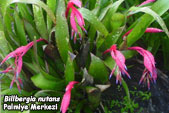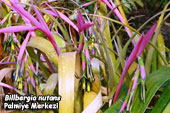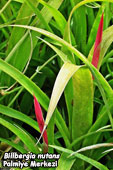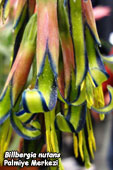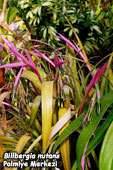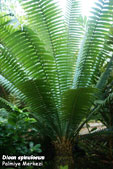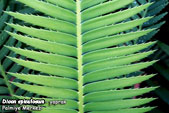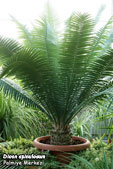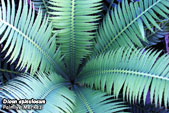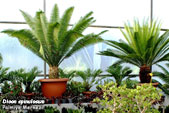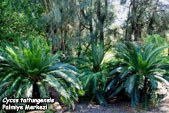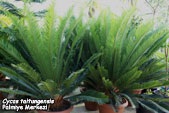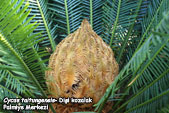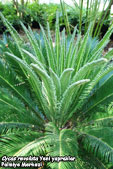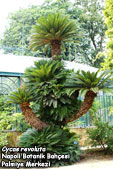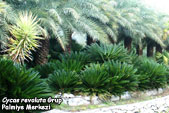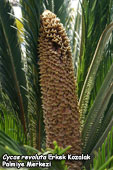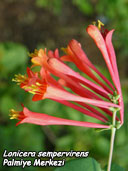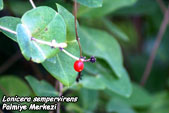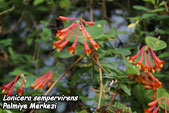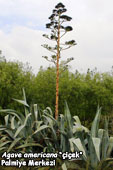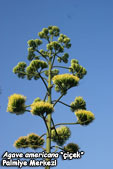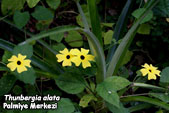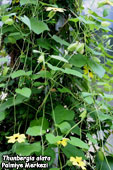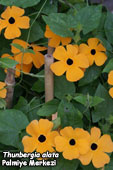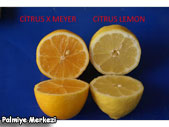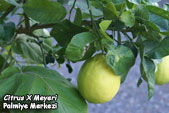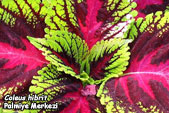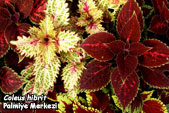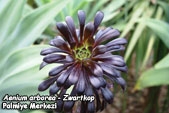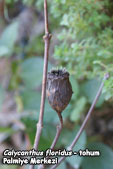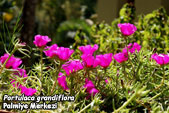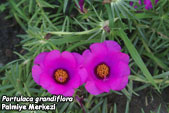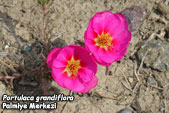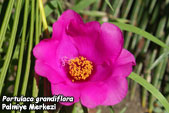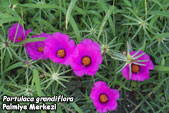 |
| |
|
|
|
If you wish this
program to be sent to your or your friends’ e-mail address,
please get a subscription (totally free of charge, and no
advertisements will be sent). I would like to get a subscription to “The Fourth Dimension in Landscape Design”>>>>>>> |
PEYZAJDA 4. BOYUT December 2014
|
|
|
Billbergia is just one genus within the large family of striking tropical plants belong to Bromeliaceae. The members of Bromeliaceae family called Bromeliads. There are more than 2000 species of bromeliads, all from the New World tropics and subtropics. These plants are tropical, not able to withstand hard frozen winter; however, some are often reported as tolerating light freezes into the -10 °C and bouncing right back. Billbergia nutans is native to Paraguay, Uruguay, southern Brazil and northern Argentina. It grows on trees and on rocks or the ground in subtropical forests. Genius name comes from Gustav J. Billberg, 19th century Swedish botanist and nutans refer to pendant flower. It is called Queen's Tears, the link to royalty may be the rich pink and purple on the magnificent blooms. The tears are drops of nectar that form on the flowers. Another English name for Billbergia nutans is Friendship Plant. That's a reference to the prolific "pupping" of the plants, and the ease with which owners can pass those to the friends. Queen's Tears is an epiphytic bromeliad with tough grasslike leaves arranged in a narrow funnel shaped rosette. Each rosette has 12 to 15 strap shaped grayish green leaves that may be flushed with red or bronze. Leaf margins are usually finely toothed and the tip is pointed. In spring, the rosette gives birth to an arching flower stalk that bears a remarkable inflorescence that has been likened to a bird of paradise. The leaves form a natural vase or funnel at the center. In the wild, this vase catches rainwater and droppings old leaves of trees. When Billbergia nutans blooms, a spike emerges from the center of the rosette. It gets longer, bends earthward, and blossoms into the complex and colorful flower with pink tube and reflexed, purple-edged, yellow-green tepals. When a mother plant blooms, that particular rosette then enters a phase of growing offshoots. The plant ultimately reach 40-50 cm height and 40-50 cm wide. Queen's Tears are among to carefree bromeliads and probably one of the most cold hardy. One report says it withstands -14 °C. Can be grown outdoors as an epiphyte or in humus-rich, sharply drained soil in frost-free location. Under glass grow as an epiphyte or in epiphytic bromeliad compost in bright indirect light. Keep the centre funnel filled with fresh water. Propagation of Billbergia nutans is done by seed or by removing pups. Pups can be separated from mature plants, cut the pup off, and remove a bottom leaf or two to expose stem for rooting. For continued flowering, the plant needs to grow new pups. Queen's Tears are almost orchid-like in their need for a well drained root zone. They can be mounted on wood or bark, or planted in coarse potting mix. Bromeliads get their moisture and nutrients not from roots, but from rain and debris that fall from above into the funnel-like rosettes. Billbergia nutans does best in a humid environment with water constantly in its rosettes. Also as a subtropical epiphytic bromeliad, it is surprisingly tolerant of drought. Indoor bromeliads benefit from occasional misting. It prefers dappled shade, reasonable overhead shelter from a canopy of larger plants and a well drained, humus-rich, slightly acidic soil. Keep moist in the summer, although they don't need huge amounts of water as they have a small root system. Use in Landscape: Queen's Tears, the easiest of all bromeliads, can be grown indoors in a pot or on a "bromeliad tree", which might be a piece of driftwood with bromeliads attached in several places. Set the tree outside under a real tree in summer. In zones 8 and above, grow Billbergia nutans outdoors in beds, borders, containers, or epiphytically on a tree or post. As a ground cover, it spreads fairly quickly to cover partly shady corners and areas under large trees. |
PEYZAJDA 4. BOYUT November 2014
 |
|
Cycads are a group of plants that can trace their origins back 200-300 hundreds of years. Although it would be incorrect to say that they are unchanged from those times, they do still retain characteristics and appereance of old ancestors as seen in fossiles. There are around 200 species of cycads, warm parts of the world. Dioon spinulosum is a cycad, belong to Zamiaceae family and dioon genus. It is one of the tallest cycads in the world also the largest American cycad. It can be grown up to 15 m in height and 30 cm diameter trunk. The giant dioon is endemik to limestone cliffs and rocky hillsides in the evergreen tropical rainforests in Mexico (Oaxaca, Veracruz, Yucatan) up to 450 m above sea level. The genus name Dioon comes from the Greek, meaning "two eggs", because the seeds are borne in pairs. The species name of spinulosum is derived from the Latin, meaning spiny. Giant Dioon has shiny, stiff, bright green leaves that grow in an upright manner. Its pinnate (feather shaped) leaves are 150-200 cm long and extend radially out from the trunk. Each leaf carry 150-250 leaflets on. These leaflets are flat, with small marginal thorns tapering to a sharp point. Dioon spinulosum is dioecious like all cycads, male and female plants needed to produce viable seeds. The female cones are 30 cm or more in length and covered with a dense wool. Seeds are cream to white colored, oval shaped and approximately 4-5 cm long and 2-3 cm wide. Giant Dioon prefers a subtropical or tropical climate, and partial shade or filtered sun. Mature and established plants have been reported to tolerate temperatures down to -4ºC for short time periods, without incurring significant foliage damage. It handles moisture and humidity better than most cycads, but must be kept in well-draining soil like nearly all cycads. Although tolerant of poor soils, the giant dioons growth can be greatly improved through the application of fertilizers. In cultivation, Dioon spinulosum is one of the most trouble free cycads. Seedlings grow rapidly and in the span of a few years can become sizeable plants. Plants do better if placed in a somewhat shady location with dampness at the roots at all times. Giant Dioon has few pest problems. Occasionally, infestations of mealybugs or scale insects occur but generally only when the plant is in a stressed condition. Dioon spinulosum may be propagated by seeds or by division and replanting of the offsets formed at the base of the plant. The leaves of the plant are used in decorations and floral arrangements. Use in landscape: A single large Giant Dioon can be an excellent feature plant in a tropical or desert landscape, in any garden in warm temperate to tropical climates. Often substituting for a true palm where a large crown is desired without a tall trunk. Dioon spinulosum can also have a spectacular place in a small garden where space is limited. It also makes an exotic striking understory plant beneath large trees or any structure that allows at least partial sunlight to pass through. A striking approach is to follow, with large paired plants in containers or feature beds that flank driveways, doorways or gates. Giant Dioon is also wonderful as a tub plant in a brightly lit spot in the home, on a porch or deck, or in a conservatory. |
PEYZAJDA 4. BOYUT October 2014
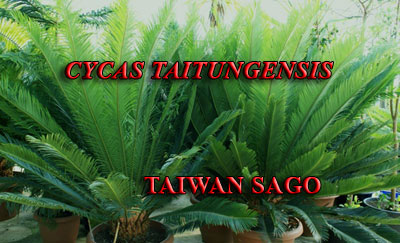 |
|
Cycads are a group of plants that can trace their origins back 200-300 hundreds of years. Although it would be incorrect to say that they are unchanged from those times, they do still retain characteristics and appereance of old ancestors as seen in fossiles. There are around 200 species of cycads, warm parts of the world. CYCAS TAITUNGENSIS - TAIWAN SAGO - EMPEROR SAGO Cycas taitungensis is belong to Cycadaceae family and a species of genus Cycas. It is native to Taitung County, south-eastern Taiwan. This species used to be widely known under the incorrect name Cycas taiwaniana, until it was properly described in 1994. Cycas taitungensis is one of the hardiest of the cycads. Native to a tiny area of Taiwan growing on rocky slopes, it is known as the Taiwan Sago Palm or Emperor Sago. Emperor Sago was listed by the IUCN “Red List of Threatened Plants” in category "vulnerable" in 1997. The extent of occurrence is 65 km², the species is known from two locations and there is continuing decline in mature individuals due to invasion by Aulacaspis scale. So Cycas taitungensis warranted classification as "endangered" in 2010. Emperor Sago is an evergreen tree with circular shape and leaves growing on top. It can grow up to about 5 m tall with a trunk to about 35 cm across. It may be superficially similar in form to the Cycas revoluta (Sago Palm), however Cycas taitungensis is a more vigorous grower than that, has leaflets that are longer, broader and flatter than its famous cousin. Female cones also tend to be more tightly imbricate and cabbage like, and seeds are darker in colour. Emperor Sago is said to be the fastest grower of all the cycads. Also very cold tolerant, able to survive temperatures as low as -10 °C, grows well in full sun as well as partial shade. Leaves are deep green, semiglossy, 100-180 cm long, with 150-170 leaflets, with orange tomentum shedding as leaf expands, rachis usually terminated by a spine. The tree is dioecious. Male strobili is in fusiform shape, yellow, 40-50 cm long, and has triangle top, while female strobili is oval 20-30 cm long and has long, narrow red crevices on its megasporophyll. The seed of the tree is in oval or long circular shape, and turns rusty color when reaching maturity. Cycas taitungensis can produce several flushes of leaves per year, it is much more than the common Cycas revoluta. Once a trunk forms, each flush of leaves adds some height, so trunked individuals are produced much sooner than with the Sago Palm. Emperor Sago is featured by fire-resistance, warmth-oriented, coldness-resistance, and it must be bathed in sunlight.
Propagation
is done by seed. Although it is written in some books that
it can be produced “dividing corms, bulbs or offsets”, we
have not seen any offsets at our experience.
Mealy bug and scale may trouble this plant. Control can be
time consuming, but systemic insecticides work well.
Aulacaspis yasumatsui
is a scale insect and a pest towards
Cycads,
able to destroy the plant.
USE IN LANDSCAPE: Cycas taitungensis is going to be one of the most popular cycads in cultivation, in both temperate and tropical locations. Although at the moment, it is not known by many, because it is hard to get it in market. The seeds came to market first in 2000, Palmiye Merkezi is one of the first brought the seeds to Europea. We produce seed from our own seed grown parents in 2002, now this plant is two years old, as seen at photo. Emperor Sago can be used in rows, in groups or solitary, also it fits for pot culture. |
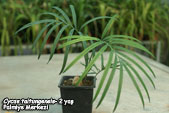 |
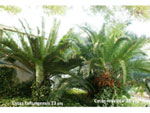 |
|
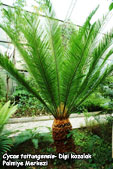 |
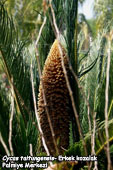 |
PEYZAJDA 4. BOYUT September 2014
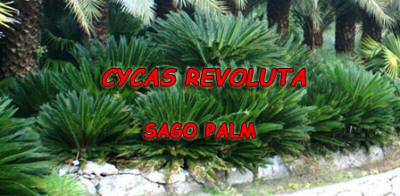 |
|
Cycads are a group of plants that can trace their origins back 200-300 hundreds of years. Although it would be incorrect to say that they are unchanged from those times, they do still retain characteristics and appereance of old ancestors as seen in fossiles. CYCAS REVOLUTA (SAGO PALM, KING SAGO, JAPANESE SAGO PALM),
Sago Palm is a gymnosperm plant, such as cycads, ginkgo, yews and conifers. One of most interesting finding, both Ginkgo and Cycas revoluta have moving sperms like in animals and also they bear hem in their juices which is a protein found in erythrocytes in animals. Sago Palm is one of the most widely cultivated cycads, grown outdoors in warm temperate and subtropical regions, or under glass in colder areas. It grows best in sandy, well-drained soil, preferably with some organic matter. It needs good drainage otherwise it may rot. It is drought tolerant and grows well in full sun or outdoor shade, but needs a lot of light when grown indoors.
New leaves are very soft and emerge from the crown of the plant. In young specimens they are often only produced in small numbers but once older and more settled a new 'flush' of 30-60 leaves comes at a time. These unfurl quite rapidly, until they have fully unfurled and 'hardened off' they remain extremely delicate and easily damaged. Sago Palms roots are called coralloid with an Anabaena (is a genus of filamentous cyanobacteria that exists as plankton). It is known for its nitrogen fixing abilities, and they form symbiotic relationships with certain plants like cycads allowing nitrogen fixation. Cycas revoluta, is dioecious as all other cycads, males bear pollen cones and the females bear groups of megasporophylls. Pollination can be done naturally by insects or artificially. Frost damage can occur at temperatures below −10 °C It does, however, require hot summers with mean high temperatures of 25 to 35 °C for successful growth. Propagation By dividing corms, bulbs or offsets and from seed. Mealy bug and scale may trouble this plant. Control can be time consuming, but systemic insecticides work well. Aulacaspis yasumatsui is a scale insect and a pest towards Sago Palm, able to destroy the plant. USE IN LANDSCAPE: Sago Palm is one of the most popular plants in cultivation. It is seen in almost all botanical gardens, in both temperate and tropical locations. In many areas of the world, it is heavily promoted commercially as a landscape plant. It can be used in rows, in groups or solitary, also it fits for pot culture. The pith contains edible starch, and is used for making sago. Before use, the starch must be carefully washed to leach out toxins contained in the pith. Cycas revoluta is extremely poisonous to animals and humans if ingested. All parts of the plant are toxic; however, the seeds contain the highest level of the toxin cycasin. Cycasin causes gastrointestinal irritation, clinical symptoms of ingestion will develop within 12 hours, and may include vomiting, diarrhea, weakness, seizures. If it had been taken in high dose, leads to liver failure Hepatotoxicity characterized by icterus, cirrhosis, and ascites. Other toxins include Beta-methylamino L-alanine, a neurotoxic amino acid, and an unidentified toxin which has been observed to cause hindlimb paralysis in cattle. |
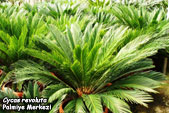 |
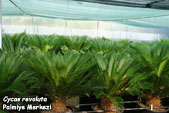 |
|
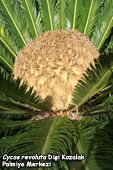 |
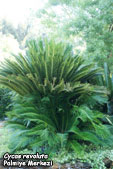 |
PEYZAJDA 4. BOYUT August 2014
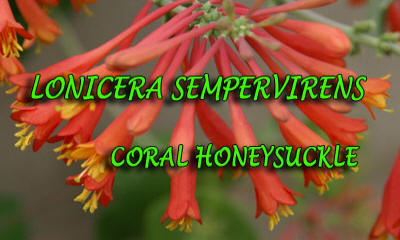 |
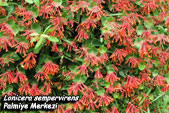 |
 |
|
 |
PEYZAJDA 4. BOYUT July 2014
 |
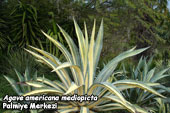 |
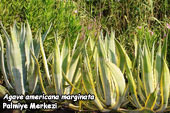 |
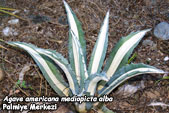 |
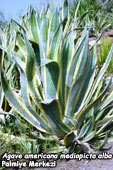 |
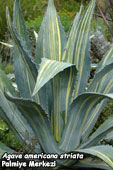 |
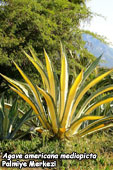 |
PEYZAJDA 4. BOYUT June 2014
 |
|
Thunbergia genus is is belong to Acanthaceae family, consist of about 90 old world species. Thunbergia, named in 1780 by Retzius, honours of Carl Peter Thunberg (1743-1828), a Swedish botanist, doctor, explorer and author who was one of the pupil of Linnaeus. Thunbergia alata naturaly found in Eastern Tropical Africa, southwards through the eastern parts of South Africa. The species name is from the Latin alatus, meaning winged. It refers to the winged petioles but it could also allude to the seeds that have projections looking rather like wings. It has become naturalized in Asia and Malesia and is consedered invasive in Hawaii and Australia.
Thunbergia alata needs full sun or light shade. It is half-hardy, needing fairly warm conditions but, with protection, young plants can survive some frost. In cold areas it is used as an annual. Flowers all summer but can continue all year in warmer areas. Propagation is made by seeds. Seeds germinates easily in a damp mixture of fine humus-rich soil with some sand. The flowers reflect ultra violet light in a pattern that is visible to insects but not to humans. This helps insects find the centre of the flower. In East Africa, Black-Eyed Susan is used as a vegetable or stock feed. Medicinally it is used for skin problems, cellulitis, back and joint pains, eye inflammation and piles. Some people can get contact dermatitis from it. In warmer parts of the world, Thunbergia alata is a general favourite as it is not fussy about soil, needs only moderate water, is mostly evergreen and covers ugly places beautifully. Black-Eyed Susan grows quickly and starts flowering at an early age. It can be trimmed if it gets too big. Light trimming in spring will encourage flowering. If frost is a problem, plant can be cut right back and it will probably resprout.
Blue and orange look well together so Black-Eyed Susan can be planted near Felicia amelloides or blue Agapanthus africanus. This creeper would go well behind white Agapanthus africanus, Dietes grandiflora and Carissa macrocarpa (Natal plum). |
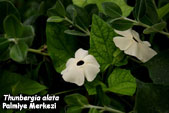 |
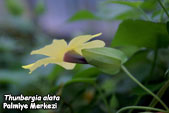 |
|
 |
 |
PEYZAJDA 4. BOYUT May 2014
 |
|
The Meyer Lemon Tree is a citrus fruit native to China. It is generally believed to be a cross between a lemon and a mandarin or sweet orange. It is belong to Rutaceae family and citrus genus. Citrus X Meyeri actually it is not a species but hibrid. Because of its obvious resemblances to the lemon and its suitability as a substitute for that fruit, it has come to be known as the Meyer Lemon. Citrus X Meyeri was introduced to the United States in 1908 by the agricultural explorer Frank Nicholas Meyer. By the mid 1940s had become widely grown in California. However, at that time it was discovered that a majority of the Meyer Lemon Tree being cloned were symptom-less carriers of the Citrus tristeza virus, a virus which had killed millions of citrus trees all over the world. After this finding, most of the Citrus X Meyeri trees in the United States were destroyed to save other citrus trees. Fortunately, one stock was deemed free and clear of disease and became the source for a newly developed "Improved Meyer Lemon" tree that released in 1975 by the University of California. Citrus X Meyeri reaching a mature height of 3-4 meter and spacing 2,5-3 m if not pruned. Tree is almost thornless, has much wider range of climatic adaptation than either the common lemon or lime. Taste of this lemon is sweeter than the common lemon. Fruit of Meyer Lemon Tree medium in size, oblong to short elliptical, surface very smooth, color yellowish-orange to orange, very juicy, lemon-flavored, moderately seedy. It grows well in warm climates, although produces fruit throughout the year, the majority of the crop is harvested in winter. A tree grown from seed usually begins fruiting in four years. Citrus X Meyeri likes warm, sunny area where the soil drains well. While the roots prefer to stay on the dry side, citrus leaves love humidity. Pruning is needed to maintain the tree’s shape. Meyer Lemon Tree, is attractive to bees, butterflies and birds. Flowers are fragrant as at common lemon tree. It can be grown at full sun to partial shade. It is self-fruitful, does not need a second tree to make fruit. Use in Landscape: Citrus X Meyeri primarly is not a landscape design material. However it can be used as a landmark at small gardens. Or can be used both side of pathways. It is frequently grown as an ornamental container plant. In cold climates should be grown indoors. |
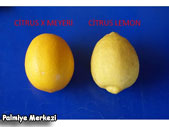 |
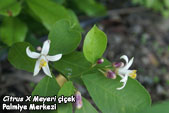 |
|
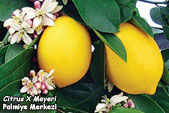 |
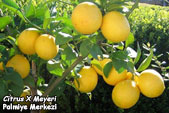 |
PEYZAJDA 4. BOYUT April 2014
 |
|
Coleus are a group of perennial plants native to tropical Asia and surrounding islands. They are noted for their bright, showy foliage and shade-loving habits. Coleus was a genus of flowering plants in the family Lamiaceae. In recent classifications, the genus is no longer recognized, and the formerly included species are instead placed in the genera Plectranthus and Solenostemon. The term "Coleus" is often used as a common name for species formerly place in the genus Coleus that are cultivated as ornamental plants. New name of Coleus blumei which is popular as a garden plant for its brightly colored foliage is Solenostemon scutellairoides. Even though Flame Nettle plants are perennials in their native lands, most gardeners tend to use them as annuals. The flowers are insignificant and the main impact is from the gorgeous leaves that come in a huge selection of colors and patterns. Coleus are prized for their colorful foliage which may combine shades of green, yellow, pink, red and maroon. New introductions of this popular annual, have been selected for increased sun and heat tolerance. Flame Nettles should be planted in a good quality potting mix, they do best when the soil stays evenly moist. Moisture is important, Coleus do like water and will wilt if the soil becomes too dry. Poorly drained soils and excessive watering will damage Flame Nettles. Plants suffering from "wet feet" will be stunted, leaves will turn a muddy brown, and leaf margins will be scorched. Most Flame Nettles prefer bright, shady conditions with a bit of morning sun. Some varieties can tolerate more sun. Coleus can reach 80-100 cm high and wide so a generous container is advised. Pinching growing shoots of young plants, encourage and maintain dense foliage. Flower spikes will appear in late summer. Propagation can be done by seeds or from cuttings. They root easily from stem cuttings at any season. Common Flame Nettles can also be grown from seeds. New hybrids generally flower little in the summer and require less maintenance than seed grown Coleus. Flame Nettles are highly resistant to serious disease or insect problems when grown outdoors in properly prepared beds or containers. Some pests to watch for include mealy bug, aphids and whitefies. Landscape Use: Coleus adapt well to container culture and are often used for a bright showy color at entryways or porches. Most Flame Nettles will grow best in part shade or dappled light. However, nowadays several sun tolerant cultivars are available. |
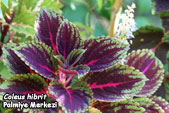 |
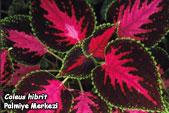 |
|
 |
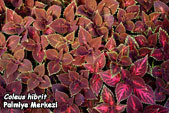 |
PEYZAJDA 4. BOYUT March 2014
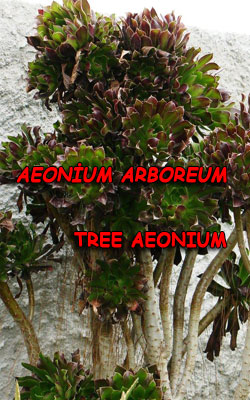 |
|
Aeoniums are one of the most ornamental of all the evergreen succulents. They are belong to Crassulaceae, a big family of succulents that include many other popular and commonly grown succulents. Name of Aeoniums is originated from Greek aionion meanin everliving. The genus Aeonium includes more than 35 species of tender, rosetted, leaf succulents mainly from the Canary Islands but also found in Madeira, Morocco and Ethiopia. These succulent plants vary in size from small herbs almost flat against the ground to 100-120 cm woody shrubs with stout basal stems supporting a round rosette. Flowers are panicles of numerous small yellow or white star shaped florets. Some members of Crassulaceae looks similar to Aeoniums. Echeverias in particular are often confused with Aeoniums and there are several other rosette forming succulents as Pachyverias, Graptopetalums, Graptoverias and Dudleyas. There is a simple way to make separete Aeoniums from other rosette forming Crassulaceas: Aeonium’s leaves are attached to the stems with loose fibrous bands so that when a leaf is pulled away, the stem is intact with only a transverse line showing where the leaf was attached. The other rosette Crassulaceas have succulent attachments and their being pulled off the stem leaves a divot in the stem. Aeoniums are easy to grow ornamantels if their demands known. Most Aeoniums come originally from the Canary Islands in the Atlantic Ocean, with a few oddball species from several isolated parts of Central and North Africa. The climate of the Canary Islands is fairly Mediterranean so these plants are perfectly adapted to many similar climates around the globe. Most are moderately drought tolerant, mildly frost tolerant, but only moderately heat tolerant as well, and dependent on bright light to full sun. They tolerate cool, frost free conditions during the winter if kept dry. The roots of Aeoniums are pretty wimpy and hair like with all the water-storing parts of the plants being in the stem and leaves. These wimpy roots are prone to drying out and many of these plants decline if not keep moist for at least most of the year. Many Aeoniums will produce aerial roots that grow right out of the stems, particularly if the stems are getting long and leggy, or fall over. Most Aeoniums are winter growers looking their best when temperature is moderate and water plentiful. As summer approaches many will curl their leaves in and go into a form of dormancy. Hot summer sun will damage Aeonium leaves and some will curl up and in as a protective response.
Many Aeoniums are monocarpic and will die after flowering.
However, non-flowering offsets on the plant will survive. New plants
can be propagated from rosettes. AEONIUM ARBOREUM - TREE AEONIUM, HOUSELEEK TREE Aeonium arboreum is a succulent, subtropical subshrub of the genus Aeonium. It is native to the hillsides of Moracco. It may reach 80-100 cm tall, bears rosettes of leaves. A large Aeonium arboreum produces an impressive panicle of small yellow flowers and then dies. The plant usually offsets along the stem before dying. Non-flowering rosettes on a flowering plant survive and can be propagated. The ordinary green Aeonium arboreum is commoner in nature but seen less frequently in cultivation. Several varieties have been described. In temperate regions it needs to be grown under glass. Aeonium arboreum cv. Schwartzkopf (Zwartkop) This selected cultivar has a large rosette of almost black succulent leaves which is often seen as a feature plant in summer bedding. There are several similar cultivars with black rosettes. There is also a white variety (var. albovariegatum). Aeonium tabuliforme is another highly ornamental from the Canary Islands. It is an amazing and highly ornamental plant, but should be confined to pot in cultivation. A flattened, stemless rosette of tightly-packed leaves up to 25 cm diameter. Each leaf has a ciliated margin. This succulent plant is monocarpic and generally a biennial. When about to flower, the centre rises to surround the flower spike of many yellow flowers. Aenonium haworthii a native to Canary Islands. This shrubby species has a dense bushy habit and grows up to 40-50 cm high. The short, erect, freely branching stems bear many rosettes of thich, bluish-grey leaves with red margins. It is a tough, long lived species which is popular as container plant for porches and patios. |
 |
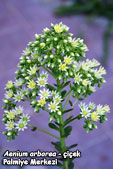 |
|
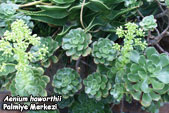 |
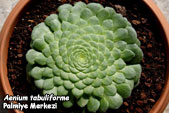 |
PEYZAJDA 4. BOYUT February 2014
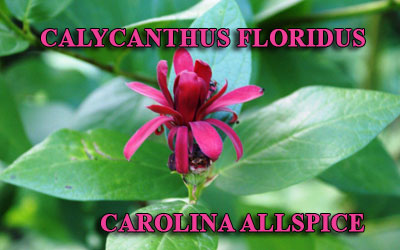 |
|
Calycanthus floridus is belong to Calycanthaceae family, native to the moist woodlands of southeastern United States. Its range extends from Virginia, south to Florida, and west to Mississippi. Calycanthus occidentalis is almost similar to floridus, but it is a little taller, flowers are bigger up to 8 cm long, and leaves also larger and their undersides are not downy, found in California. Two types of Calycanthus floridus was described as: Calycanthus floridus var. floridus and Calycanthus floridus var. glaucus. Carolina Allspice is a dense, rounded deciduous shrub with a suckering habit which grows 2-4 m tall with an equal or slightly greater spread. The dark green leaves (pale beneath) are opposite, ovate to elliptic 5-12 cm long and 2-5 cm broad, turn golden yellow in autumn. Leaves are aromatic when bruised. Reddish-brown flowers are strongly scented, 4-5 cm long, appears in May and June. Flowers give way to brownish, urn-shaped fruits (seed capsules) which mature in autumn and persist throughout the winter. There is variation is the amount and nature of the perfume among individuals. The flowers also seem to become more fragrant as they age. It is better to choose the plant when it is in bloom to find one with fragrance. Calycanthus floridus also commonly called, sweetshrub and strawberry bush in reference to the fragrant blooms which have been described as combining hints of pineapple, strawberry and banana. Propagation can be done by seeds, layers, and divisions. Carolina Allspice produces suckers in profusion. These can be easily dug and planted in a new location. Calycanthus floridus is easy to grow, pest free, not particular about type of soil and easy to propagate. It likes moist soil, must be kept wet in dry climates. The delightful fragrance of its flowers turns this nice little shrub into a real winner. Dry the flowers, leaves, twigs and bark to use in potpourri. Use in landscape: Carolina Allspice may be used in natural areas and woodland gardens where it can sucker freely and assume its natural habit. Calycanthus floridus is also nice in planters near entryways and patios where it's delicate fragrance can be enjoyed. |
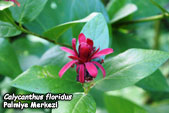 |
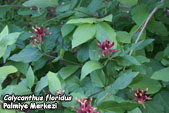 |
|
 |
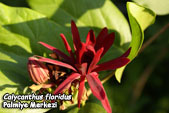 |
PEYZAJDA 4. BOYUT January 2014
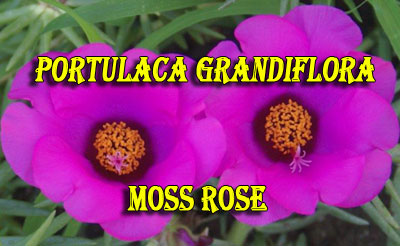 |
|
Portulaca grandiflora
is belong to portulaceae family.
Portulaca oleracea
(pig weed) is well known and edible vegetable in Turkiye is also
belong to the same family.
Moss rose native to South Brazil, Uruguay and Nort Argentina. It is a prostrate, trailing, multi-branched annual with semisucculent stems and leaves. English common name Moss rose is given for rose like flowers appearing on prostrate to slightly ascending stems that form a moss like foliage mat. Portulaca grandiflora reaches about 10 cm height with a spread of 30 cm. The reddish stems and the bright green leaves are thick, soft and juicy. The leaves are cylindrical, about 2 cm long, and pointed on the tips. The roselike flowers are 2-4 cm wide. Flowers bloom summer to frost and come in single, semi-double or double forms in colors including pink, red, yellow, white or orange. The flowers are borne on the stem tips, and they open only during bright sunlight, closing at night and on cloudy days. Moss rose is cultivated throughout the world as a favorite garden annual. It is one of very few annual succulents. Easily grown in poor to average, dry to moderately moist, well-drained soils in full sun. Drought tolerant, but flowers best with regular watering. Seeds can be sown directly in the garden after the last frosts or start indoors 6-8 weeks earlier. There are several strains, cultivars and mixes of Portulaca grandiflora are available. Many have double flowers and some are up to 7-8 cm across. Usage at landscape: Moss rose good for poor dry soils where many other plants struggle. It makes a beautiful ground cover in a dry or rocky area. Also can be used as edging at the front of borders or in the cracks in a rock wall, or the spaces between stepping stones. Use Portulaca grandiflora perfect for a hot, dry, south facing slope. Plant it in a container or hanging basket and let it spill over like a sedum. Sprawl over stone walls. Do not forget Moss rose prefers full sun and does not like boggy soil or wet feet, so make sure that containers or gardens drain well where it is planted. Don't water with overhead irrigation, which can damage the flowers. If left on its own, it will reseed and new plants will pop up each spring. Leaves, roots and seeds are edible. |



